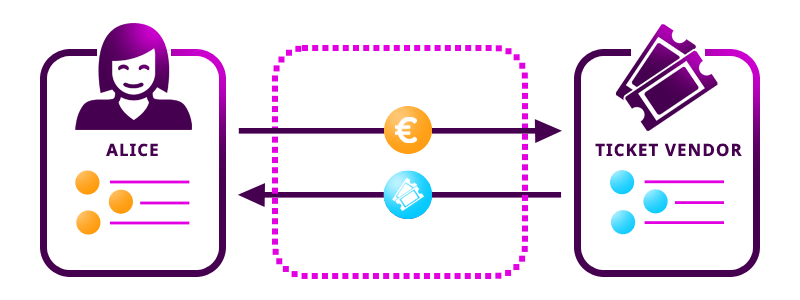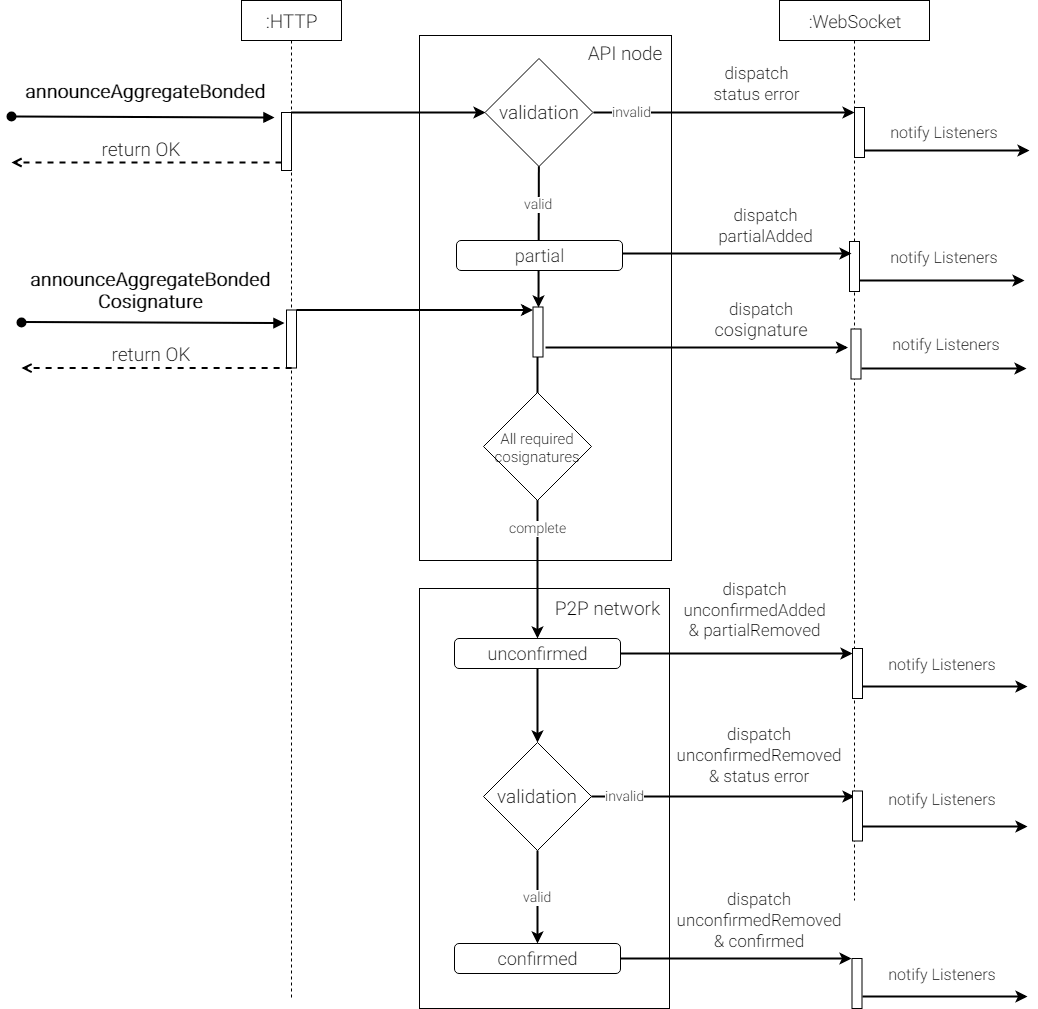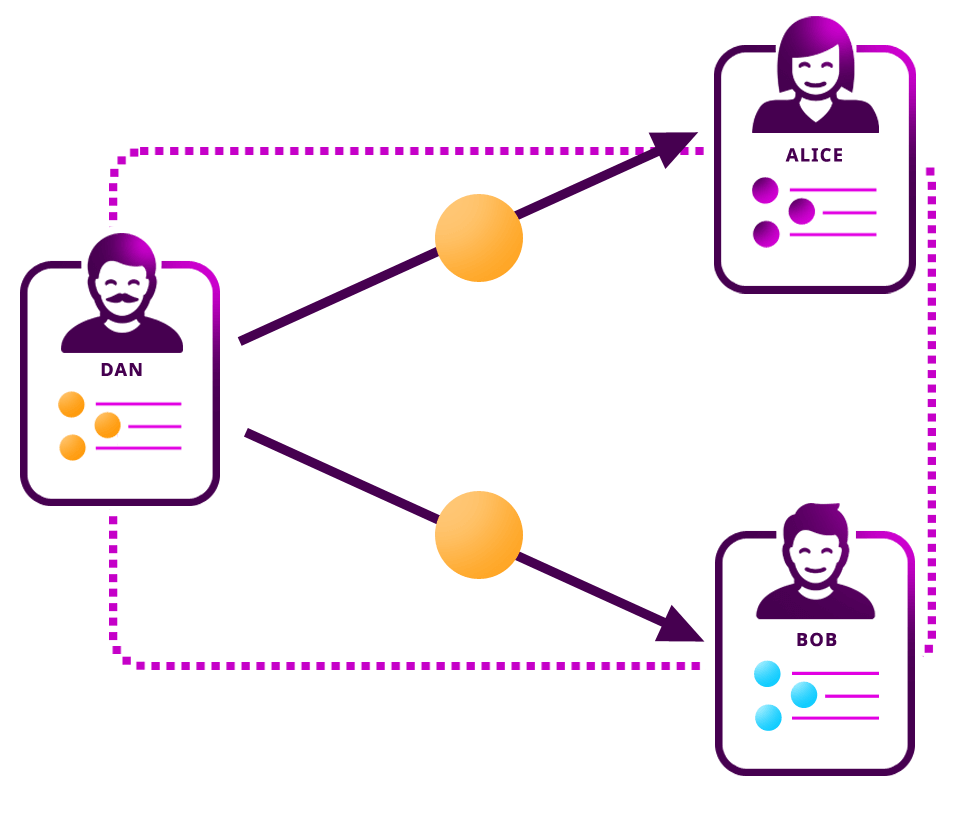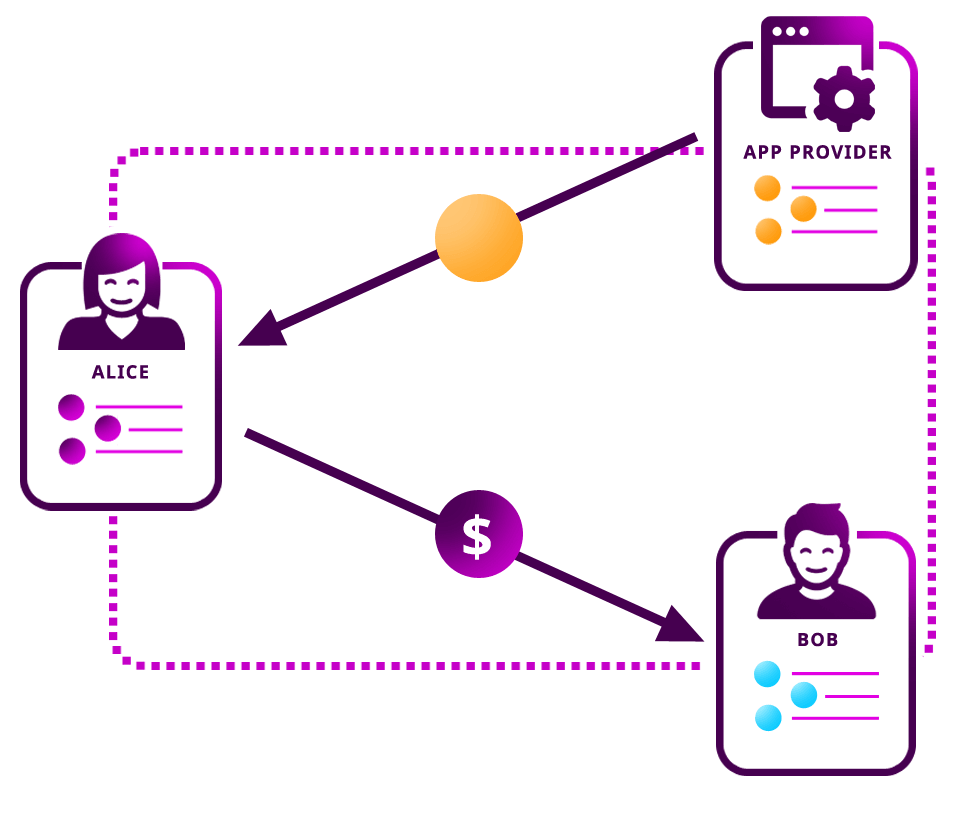Aggregate Transaction
Aggregate transactions merge multiple transactions into one, allowing trustless swaps, and other advanced logic.
Symbol does this by generating a one-time disposable smart contract.
When all involved accounts have cosigned the AggregateTransaction, all the inner transactions are executed at the same time.
Symbol’s public network supports aggregate transaction containing up to 1,000 inner transactions involving up to 25 different cosignatories.
Other aggregate transactions are not allowed as inner transactions.
Aggregate complete
An AggregateTransaction is complete when all the required participants have signed it.
The cosigners can sign the transaction without using the blockchain.
Once it has all the required signatures, one of them can announce it to the network.
If the inner transaction setup is valid, and there is no validation error, the transactions will get executed at the same time.
Aggregate complete transactions enable adding more transactions per block by gathering multiple inner transactions.
Aggregate bonded
An AggregateTransaction is bonded when it requires signatures from other participants.
Note
Before announcing an AggregateBondedTransaction, an account must announce and get confirmed a HashLockTransaction locking 10 symbol.xym.
Once an aggregate bonded is announced, it reaches partial state—where it can live up to 2 days—and notifies its status through WebSockets or HTTP API calls.
Every time a cosignatory signs the transaction and announces an aggregate bonded cosignature, the network checks if all the required cosigners have signed.
When all signatures are acquired, the transaction changes to unconfirmed state until the network includes it in a block.
Examples
Sending multiple transactions together
Dan announces an AggregateTransaction that merges two transfer transactions.
As Dan is the only required signatory, the transaction is considered complete after he signed.
After announcing it to the network, Alice and Bob will receive the mosaics at the same time.
Multi-asset escrowed transactions
In this example, Alice is buying tickets with currency.euro mosaic.
When the ticket distributor cosigns the AggregateTransaction, the swap will happen atomically.
Paying for others fees
Alice sends 10 currency.euro to Bob using an app to make payments.
But Alice doesn’t own symbol.xym to pay the transaction fee.
By creating an AggregateBondedTransaction, Alice can convert currency.euro to symbol.xym to pay the fee.
Now, Alice and Bob can use Symbol’s public blockchain without ever having to buy or hold symbol.xym units.
Since the app creator can put its own branding on the open source payment app, Alice and Bob may not even know they are using blockchain technology.
Did you find what you were looking for?
Give us your feedback.



